LUXKIT A3600復活への道~その4・調整編~ [オーディオ]
2017年1月14日の日記
とうとう,この2年ほど取り組んでいた,ラックスキットのA3600アンプが本日,試運転の日を迎えました!!!
LUXKITのA3600というアンプはNECと共同開発した,大出力3極出力管8045Gをプッシュプルで使った,50W×2のアンプです。発売は1975年のようなので,もう発売から40年経っています。
と言う次第で,いつも大変お世話になっている河童さんからいただいた後,いろいろとメンテナンスと設計変更をしておりました。
まずはコンデンサやソケット,錆びた端子などの老朽化した部品の交換に始まり,トランスやボンネットの塗装や回路の設計変更をして時間がかかってしまいました。
基板ソケットはQQQのものを使いたかったのですが,基板用が手に入らなかったので,中国製の金メッキ品を使っています......![]() 。
。
案の定,ソケットが渋くて真空管がスムーズに差さりませんでした。こういうときは無理をすると真空管を割っちゃうので,一度小さなマイナスドライバー(#0)を突っ込んでコンタクト部分を拡げておきます。
カップリングコンデンサはすべて新品のフィルムコンに変更します。なお,真空管アンプのカップリングコンには必ずフィルムコンを使うようにしてください。
オイルコンやペーパーコンは経年劣化でリークしますので不可です。オイルコンは歴史があるし,音がよいから,ということで愛用している方も多いと思うんですが,安全面を考えると要注意です。リークすると出力管の寿命に直結しますので,フィルムコンにしてください。iruchanは独EROを愛用しています。すでに製造中止ですけどね....。
A3600はオリジナルは日通工のフィルムコンでした。これなら安心ですけど,やはり年月が経っていますし,リード線が錆びているので交換しました。
そのほか,位相補正用のセラミックはディップマイカに交換しました。出力管の動作点が変更となり,バイアスが少し浅くなったので-C電源も少し定数をいじっています。
なお,残念ながら,50C-A10PPのKMQ60はオイルコンが使われています。お使いの方はすぐに交換した方がよいと思います。KMQ60はOPTが断線したものが極めて多く,多くは湿度による断線ですけれど,カップリングのオイルコンがリークしてバイアス電圧が浅くなり,過電流で切れている場合もあるようです。
すべてのフィルムコン(マイラーコン含む)およびDiを交換しました。B電圧を下げるための大きなACコンデンサは左隅に収まりました。KMQ60だとこのスペースがないので困ってしまいますけど......。
他に,固定バイアスなので,普通のVRの使用は大変危険ですから,すべてバイアス関連のVRはコパルのサーメット半固定(RJ13B)に交換しました。あと,適宜エンパイアチューブで絶縁しました。元の状態はすべて裸で,調整中など,危険でした。
このアンプははわざわざ8045Gなんて大出力の真空管を開発したところからもわかるように,大出力指向のアンプで,この前も書きましたように,公称50Wのアンプですけど,実は実測で66Wも取れちゃいます。
そんな大出力はいらん,という気がしますし,何より8045Gは寿命が短いことで知られているので,もっとB電圧を下げて楽をさせてやりたいと思っていました。
今回,トランスの2次側出力にAC用コンデンサを挿入してB電圧を60Vほど下げることにしました。 また,これに伴い,ドライバ段の定数変更が必要となりますので,Spiceでシミュレーションして定数を決定しています。
それに,8045Gドライブ専用として6240Gという真空管も採用されていますが,これも入手困難なため,6FQ7で代用します。 特性が異なりますので,こちらも前回,あわせて検討しました。
回路の変更箇所を示します。赤字が今回の変更箇所です。6240Gがない,と言う方も6FQ7で代用可能ですので,ご参考にしてください。また,本機はA3300プリアンプの電源供給用にGTソケットがついていますが,電源のフィルタコンデンサの周辺がすごく混み合っているので廃止しました。もう,A3300プリアンプを入手して使うこともないでしょうしね。
なお,電源部は少し,元の状態が変わっていて,オリジナルだと2連の電解コンデンサを使っているのですが,どういうわけか3連のものが使われていました。もとの所有者の方が改造したのか,それともA3600のバージョンのひとつなのかわかりませんけど。もはやブロック電解コンデンサは国産のものはなくなっていますし,テストしてOKだったのでもとのものを使っています。オリジナルの回路はこちらです。
今日はいよいよ通電して調整していきます。
まずは電源部のテスト。一番危険な箇所ですし,回路を間違っていると大変なことになりますので,まずはここからテストします。案の定,フィルタコンデンサのはんだが一部,テンプラになっていてうまく高圧が出ませんでした。ついでに電解コンデンサのテストをしておきます。古いケミコンはリークしたり,容量抜けしたりしてハムが出たりしますので,少し低めの電圧をかけてテストします。
まずはスライダックで1次側にAC10~20Vの電圧をかけ,各電解コンデンサにちゃんと電圧がかかっているか調べます。うっかり,極性を逆に配線していてもこれくらいの電圧なら助かりますので。特に,今回,A3600は固定バイアスのアンプなので,バイアス用のケミコンにちゃんとマイナスの電圧が出ることを確認します。
ダイオードが発熱したりしないかも調べておきます。問題なければAC50Vくらいにしてしばらく放置します。このとき,B電圧は250Vくらいになるはずです。
これで電解コンデンサの絶縁皮膜が回復するのを待ちます。フォーミングというのですが,米国製の電解コンを使った場合などは必ずこの状態で数時間放置してください。日本製のケミコンはいきなり高圧をかけても何の問題もないですけど,MalloryやSpragueなどの米国製の場合,いきなり高圧をかけるとヒューズが飛ぶことがあります。
なお,まだ現在は全く無負荷の状態なので,絶対にAC100Vにしないでください。ドライバ用の電解コンデンサなどの耐圧をオーバしちゃいますので。
さて,次はドライバ用の6AQ8と6FQ7だけ挿して,また徐々に高圧を加えます。プレート電圧などに異常がなそうならAC90Vくらいまで電圧を上げます。
ここで,一応,出力段のバイアス電圧を調べておきます。
8045Gのカソード(#8ピン)に黒,グリッド(#5)ピンに赤のリードを当ててみて,ちゃんと-90Vくらいの電圧が出るのを確認します。また,各半固定ボリウムを回してみて,スムーズに変化することを確認します。すべての8045Gのバイアスが-90Vくらいになるようにセットしていよいよ出力管を挿します。
さて,いよいよ出力管のプレート電流を調整します。
スライダックで再度,徐々に電圧をかけていきます。カソード~GND間に10Ωが入っていますので,この両端の電圧を計測して750mVとなるようにします。
今回,8045Gの動作点は前回のブログにもあります通り,EP=430V,Eg=-85V,IP=75mAとしましたので,この抵抗の電圧は750mVです。
残念ながら,8045Gの1本が少しエミ減気味で,R ch.はIP=70mAであわさざるを得なかったので,B電流が少し小さく,B電圧は450Vになりました。ほぼSpiceのシミュレーションどおりです。
オリジナルのA3600はEP=495V,Eg=-100V,IP=80mAですので,もう少しプレート電流は流した方がよいのかもしれませんが,プレート損失を抑えて33Wにしました。オリジナルだと39Wですから,▲15%としました。
プレート電圧も含め,プレート損失も出力管の寿命を考えると,もう少し小さい方がよいと思います。
これで4本すべてのプレート電流をあわせます。各ch.の上下の出力管のアンバランスは1mAを目標に調整しました。
さて,ここまで来たらf特と出力を見ておきます。
ちょっと驚いちゃいました。10Hz~50kHz(-1dB)と言ったところで,非常に広帯域です。特に,低域のレスポンスがよいのはプッシュプルアンプの特長ですけど,それにしても10Hzでも-0.7dBで,実際には-1dBも行っていないのですから。iruchanの持っている低周波発振器は10Hzまでなので,それ以下はわかりませんけど,カットオフは非常に低いはずです。高域も50kHzとは驚きで,手持ちのLUXKITのKMQ60より非常に広帯域です。
出力は53.6Wとなりました。まだ少し大きいですが,まあこんなのものでしょうか。
リンギングやオーバーシュートもなく,素直な方形波応答です。
さあ,いよいよお楽しみ.......。音を聴いてみます。
まずはいつも聴いている,アナ雪。まだはまっちゃってます。
う~~ん,最近は "君の名は。" が大受けで,そろそろアナ雪も抜かされそう,と心配しちゃっているんですけど。それに,昔からiruchanは学園ものが嫌いなので,今年の正月は子供と "君の名は。" じゃなくて, "この世界の片隅に" を見に行きました。これ,本当にいい映画です。悲しい結末だけれど,戦時下にも前向きに生きようとしている主人公に共感を覚えましたし,とても勇気づけられました。それに,悲劇を描いているけれど,妙に明るくて,笑いながら最後まで楽しめます。
さすがに,あまりに悲しいと,某戦争アニメみたいに,とても最後まで見ていられないということになっちゃいますので。 日本映画って,誰かもFMで話していましたけど,こういう見たらトラウマになりそうなのが多くて困ります。実は,iruchanはそのチョ~有名な戦争アニメは今まで,一度も最後まで見たことがありません......(^^;)。
松たか子さんの高音の伸びた澄んだ歌声に魅了されます。やっぱ,いい曲だな~~~!!
それにしてもずいぶん寒くなってきましたけど,このアンプはストーブ代わりになります。なにせ200Wもの熱を出しているのですから,小型ストーブ並みです。実際,調整中は寒いので8045Gに手をかざしながらやっていました。火鉢かよって!?。これやったらストーブいらへんやん,と言う次第で,やっぱ....
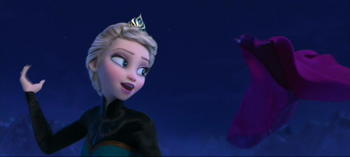
♪ 少しも寒くないわ~ (松たか子さんの声で!!)
アンプはとてもノイズが少なく,ハムが全く聞こえません。こういう点はプッシュプルのアンプですね。シングルのアンプはどうしてもハムが残っちゃいますけど。音も左右の分離がよく,豊かな低音が魅力です。それほど高音は伸びている感じはしませんが,やはり真空管特有の暖かくて柔らかな音だと思います。半導体のアンプじゃ味わえませんね。
さて,お次はお約束のフルヴェンの第九。本当は年末に完成させて,師走に聴きたかったですけどね.....。
ご存じ,言わずと知れた1951年7月29日のバイロイト音楽祭の初日の演奏録音です。やはりこれしかない!!という感じのチョ~名演です。
聴いたのは東芝EMIがSACDのハイブリッドで出した盤。紙ジャケだし,SACDになったし,と言うことで買ったものです。
ただ,ちょっと驚いたのはフルトヴェングラーが壇上に登場する音が入った,いわゆる "足音入り" の盤なんですけど,なぜか以前の盤に入っていた,第1楽章冒頭の耳障りな聴衆の咳払いや,マスターテープの劣化による第2楽章のドロップアウトがなくなっています。
後者は耳障りなのでなくなってよかったですけど,どうにも冒頭の咳払いがなくなっているのは変。何をやって消したのかわからないんですけど,これがないとフルヴェンじゃない,という感じです。演奏と一体化しちゃっているので,iruchanはちょっと変な感じがします。
やはり一番の聞きどころは第4楽章のバリトンのエーデルマンが歌い出す前後。 おぼろげに低音がこもったような響きのホールにオケの演奏が盛り上がって彼が歌い出すところは秀逸。
♪ おお、友よ! このような調べではない!........
と言う次第で,今年はフルヴェンの第九からはじまりました。また本年もどうぞよろしくお願いします。
Beethoven Symphony No.9 (TOCE-11005)
2023年8月16日追記
MJ '83.2月号掲載の森川忠勇氏による6550 3結のモディフィケーションです。
This is the modification with 6550 triode connection by Mr. Morikawa appeard in MJ Feb. 1983 issue.
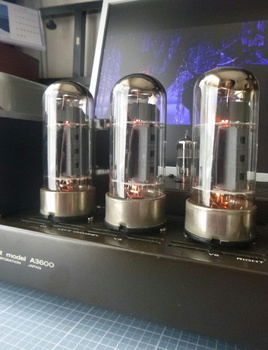




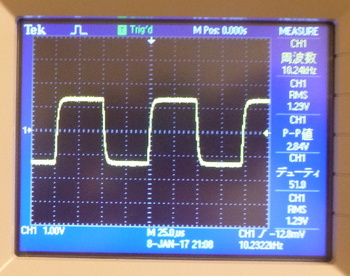
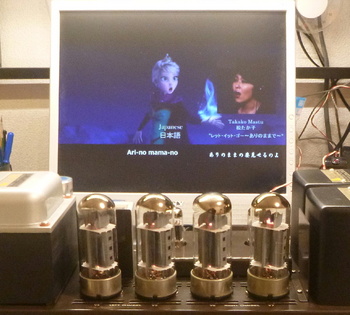
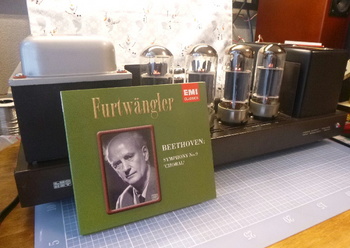
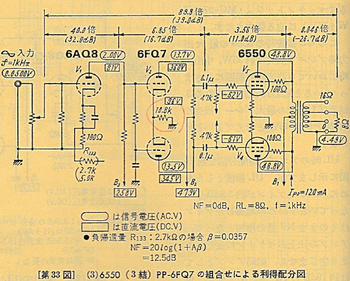




Thank you so much for your blog on the restoration of this lovely amplifier. It helped me restore my A3600! Mine has the screen grid wired to the ultralinear taps on the output transformers and I have installed KT120s biased a bit cold (72-73mA). Also, I left the power supply in stock form - note that the first two filter caps should be connected in parallel with another to form 2x47uf, 2x47uf, 47uf, 47uf. It isn't noted in the schematic but it is shown in the assembly manual.
by Greg (2023-08-04 14:53)
Dear Greg,
I am much delighted to hear that my blog helped you.
The original A3600 uses: 6AQ8(1st.), 6240G(2nd.) and 8045G(output). Among them, 6240G and 8045G were Lux's original and made by NEC.
The 8045G is a giant triode, its plate dissipation was 45 watts, and 6240G was designed to drive 8045G.
The 8045G had short life due to the huge power output.
So, Luxman and some amateurs replaced the tube with British KT88 and later GE 6550A(American equivalent to KT88).
Your A3600 has SG connection, maybe it's a modified or restored version of A3600.
Original? Luxman's modification used triode connected KT88, but yours is modified further, ultra-linear connection to get more power. Triode connected KT88 has less power than 8045G, only 27 watts available.
A3600 with 8045G like mine is very rare.
Also, 6240G is also deterioated, but it's easily replaced with 6FQ7 with some modifications.
My A3600 lost one of 6240G, so I replaced it with 6FQ7 in accordance with Japanese magazine in 1980s.
If you would like to ask more, please leave comments.
Thanks again for your message.
by iruchan (2023-08-04 19:27)
How wonderful to hear from you, iruchan.
You are right, my A3600 has been heavily modified from original to take KT88s/6550 output tubes. The amount of NFB has been increased by increasing R133-134 from 2.7Kohm to 2.2Kohm and R135-136 from 22ohm to 11ohm . Perhaps this is because it is wired for ultralinear, rather than triode mode.
By the way, I don't see R135-136 in your schematic above. I presume they were not removed from your A3600?
Also, I see you changed the value of R111-112 cathode resistor for the 6CG7/6FQ7 to 10Kohm. I increased mine to 9Kohm to balance the output of the sides of each triode, according to an online calculator for balancing a LTP phase inverter. It made a noticeable difference (improvement) to the sound.
I really love the music my A3600 makes and can't imagine how wonderful the original was! One day, I may convert mine back to Triode mode.
Kind regards
by Greg (2023-08-15 21:40)
Dear Greg,
Oh, I'm very sorry. I forgot R133 and C111 on the schematic. As shown on the second picture, I replaced C111 with new Nissei film capacitor.
It reduces impedance of the speaker to avoid high frequency oscillation. It's often used in transistor amplifier, but I never see in vacuum tube amplifiers.
Also, the cathode resistors of 6FQ7(R111, 112) were replaced with 10kΩ according to Mr. Morikawa's article in MJ Feb. 1983.
At that time, 6240G was more scarce and difficult to find, so he recommended 6FQ7 as a replacement. Mine too, one 6240G was lost, so I replaced both of them.
If you want to use triode connected KT120, please refer to the schematic I added today. This is also Morikawa's modification with 6550/KT88 in the same article.
In Japan, A3600 is converted to triode connected 6550A. Japanese don't like pentodes, we prefer triodes.
Sorry, he died in 2018, so he didn't write about KT120. I respect him and I learned a lot of vacuum tube amplifiers. I was a high school student in 1980s!
by iruchan (2023-08-16 09:55)
Ah, that's very good. I replaced C111-112 too, but with Wurth box film caps. Thanks, for explaining their purpose as I wasn't sure!
I'm very grateful for the picture of Mr Morikawa's modifications, which is very interesting. What a great teacher he must have been and a sad loss for you.
The plate voltages for the 6CG7/6FQ7 tubes in my experience are lower than his (anywhere between 310-340V, depending on the line voltage at the time time and specific tubes I've installed). The cathode voltage is generally 9-11V higher than the plate voltage of the 6AQ8 tube I'm using, which can be anywhere between 79-86V. This means the operating point of the 6CG7/6FQ7 tubes is generally between 220-250V. I'm happy with these ranges.
I have a set of old Svetlana KT88 tubes, which are rated for 42W that I keep in reserve. With the help of vtadiy.com, I've plotted the operating point of these tubes. They seem to operate uncomfortably close to the edge of their capability when paired with my Audio Physic Spark II loudspeakers, which have a relatively low impedance curve (4-6ohms).
I'm not a fan of pure pentode sound, either, but I seem to prefer ultralinear to triode mode on other amplifiers I've listened to when they have the option to switch between each configuration.
I have documented my experience with the A3600 on this webpage, if you are interested: https://www.stereonet.com/forums/topic/546514-my-first-valve-amp-luxman-a3600-running-kt88s/page/6/#comments
by Greg (2023-08-17 05:03)
Dear Greg,
Thank you for the link of your modification.
I modified my A3600 to reduce power output. As Mr. Morikawa pointed out, its output is 66 watts, although lux depicted its output is 50 watts.
The 8045G tubes is notorious for its short life, so I reduced its plate voltage to 431 volts.
As for the KT120, I think it's a ruggidized version of KT88. I checked its characteristics, I suppose its same as KT88 except higher plate dissipation.
You can probably connect SG with Plate via 100Ω as Morikawa's schematic. Please note the SG disspation should not be higher than 8 watts.
I think russian made KT88 and KT120 are good tubes.
Sorry, I do have original KT88 made by British GEC and older version of 6550(shouldered shape) made by RCA. I planned to use them in my future amplifier, but I have no passion to use them because I'm getting old.....
Bye, then.
by iruchan (2023-08-19 02:42)
Dear iruchan
I hope you are well!
I thought you might like to know that I decided to replace my 9Kohm resistors and try 10Kohm Cathode resistors in the phase inverter (second) stage, as per your design decision. This increased the plate voltages on both first and second stages to 84-89V on the first stage and 95-100V on the second stage, depending on the line voltage and 6AQ8 tube I use (I have about 12 of them).
I have also tried 6GU7s in place of the 6CG7 driver tubes and find I like the sound from the 6GU7s better. They also seem to operate in the sweet spot, according to calculations in vtadiy.com.
Best regards
Greg
by Greg (2023-10-19 15:21)
Dear Greg,
Thank you for your comment.
BTW, don't you have 6240G? If so, 6FQ7 is usually used as a replacement in Japan. Also, if 6FQ7 is used, Morikawa recommended to use 9k Ohm.
However, 6GU7 is quite similar to 12BH7, so I think it's also used as a replacement. To tell the truth, I didn't know 6GU7,but google told me it's a 6.3V version of 12BH7. In Japan, Hitachi made 6GU7.
OK, thank you for your info.
by iruchan (2023-10-19 20:14)
My amp came with 6CG7s. I bought a pair of used 6240Gs but one of the triodes was bad and created low frequency oscillation. I gave up on them and now have about a dozen new-old stock 6CG7s and 6GU7s and I've found the best pair of each type.
I wonder if you experimented with different resistor and capacitor values in the feedback circuit? My amp has different values from original: from 8ohm speaker tap = 2,200ohm resistor (R133) bypassed with 330pf capacitor (C113); from primary of output transformer = 20pf capacitor (C115 no change); from cathode of output tubes = 0.22uf capacitor (C111 no change) in series with 11ohm resistor (R135).
Incidentally, I have found the A3700 circuit has a variation with KT88s wired in Ultralinear, which is similar to the A3600 but with extra complications.
Best regards
by Greg (2023-10-30 04:12)
Dear Greg,
Sorry for the delay.
My amp is not modified, except for the 10kΩ. However, I don't have the assembly manual, so I referenced Morikawa's article.
Maybe the R133, C113 etc. are the compensation circuit in the feedback loop and your output tube is changed to KT120, it has different gm from 8045G, so the previous owner had to change them.
by iruchan (2023-11-06 16:10)